Abstract
1. The rate of entry of L-arginine and L-lysine into the brain of the rat was measured in vivo by a direct method in which the amino acid concentration was at a constant level in the blood plasma over the period of the experiment.
2. Both L-arginine and L-lysine enter the brain by a transport mechanism which can be saturated by a high concentration of the same amino acid in the bloodstream. The rate of entry can be explained by Michaelis—Menten kinetics.
3. The entry into the brain of L-arginine can be inhibited by raised plasma concentrations of L-lysine or L-ornithine and the entry of L-lysine by raised concentrations of L-arginine.
4. The inhibition of entry of an amino acid is most severe when its own concentration in the blood plasma is low and that of the inhibitor is high. The inhibition appears to be basically competitive in type, suggesting that common transport systems are shared by three dibasic amino acids.
5. It is suggested that the raised levels of amino acids found in various disorders of amino acid metabolism are likely to reduce the rate of entry into the brain of other amino acids and a way is suggested in which the dietary treatment of hyperlysinaemia may be made more effective.
Full text
PDF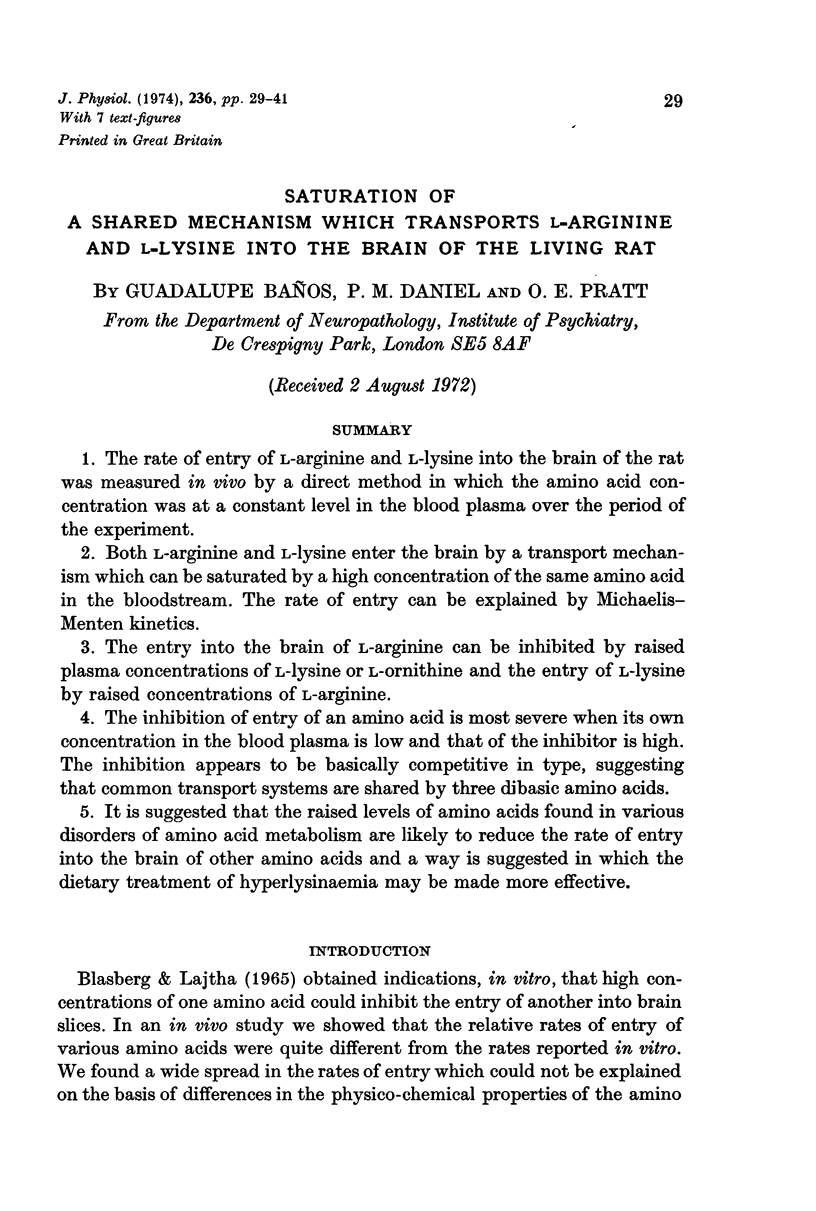
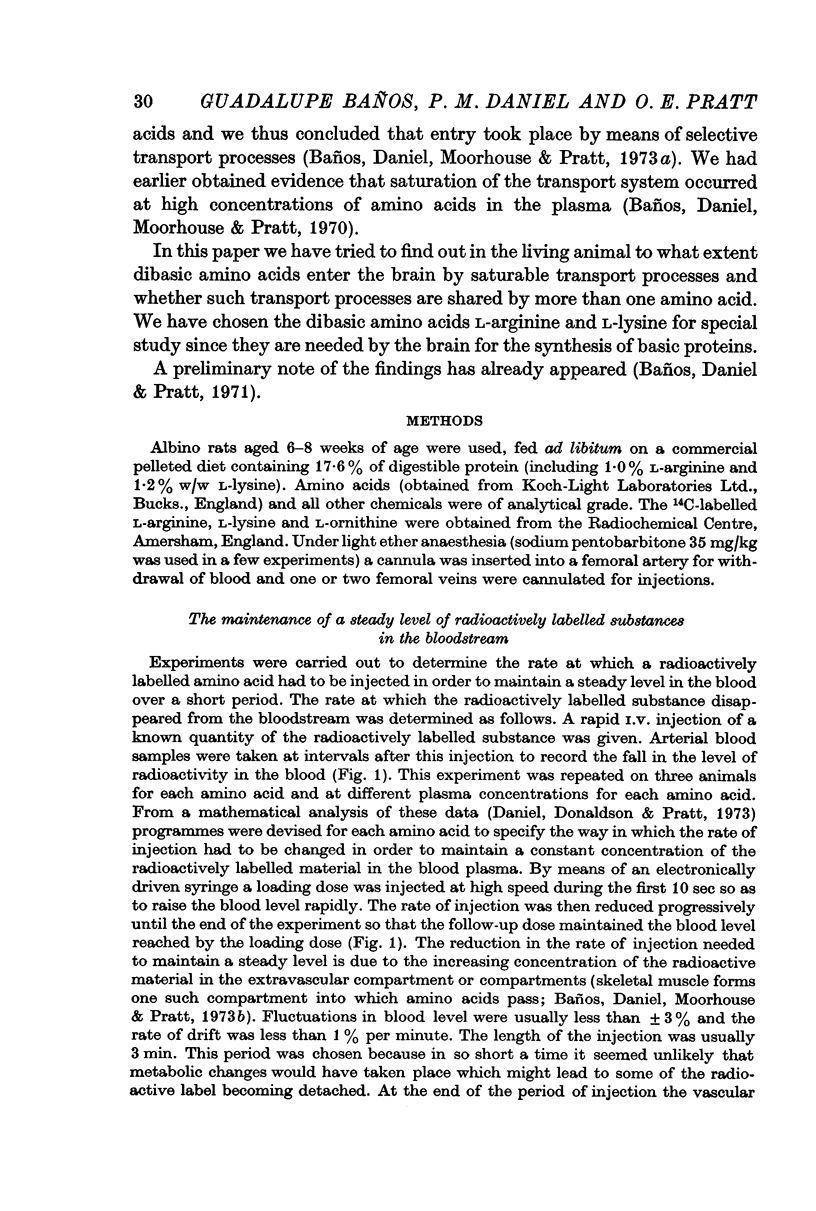
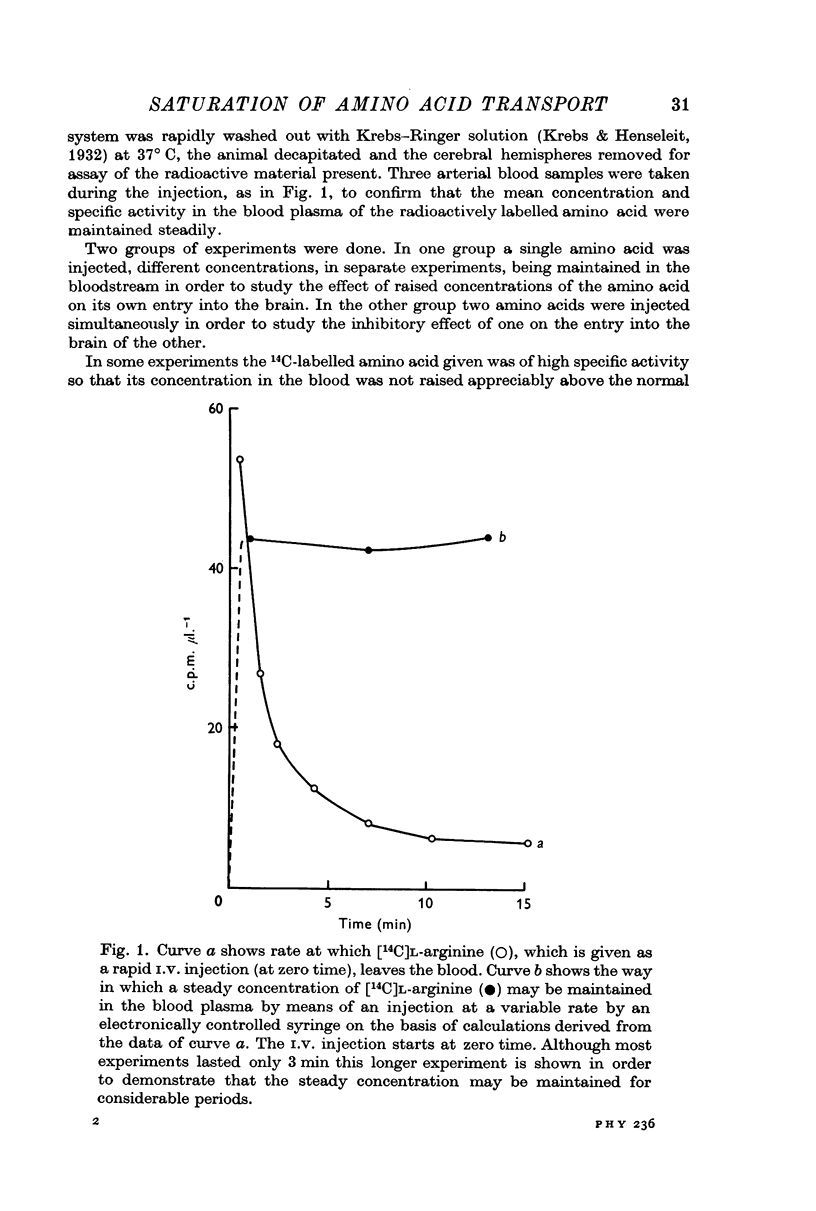
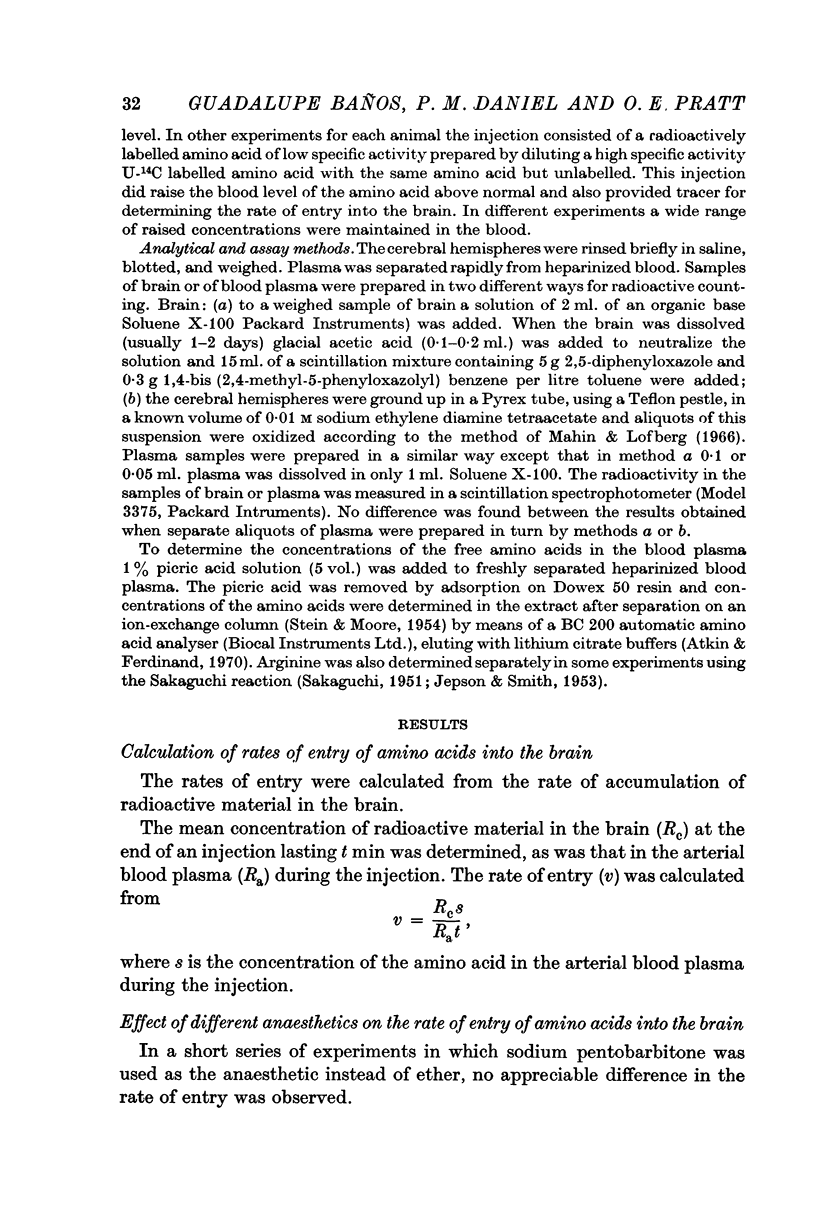
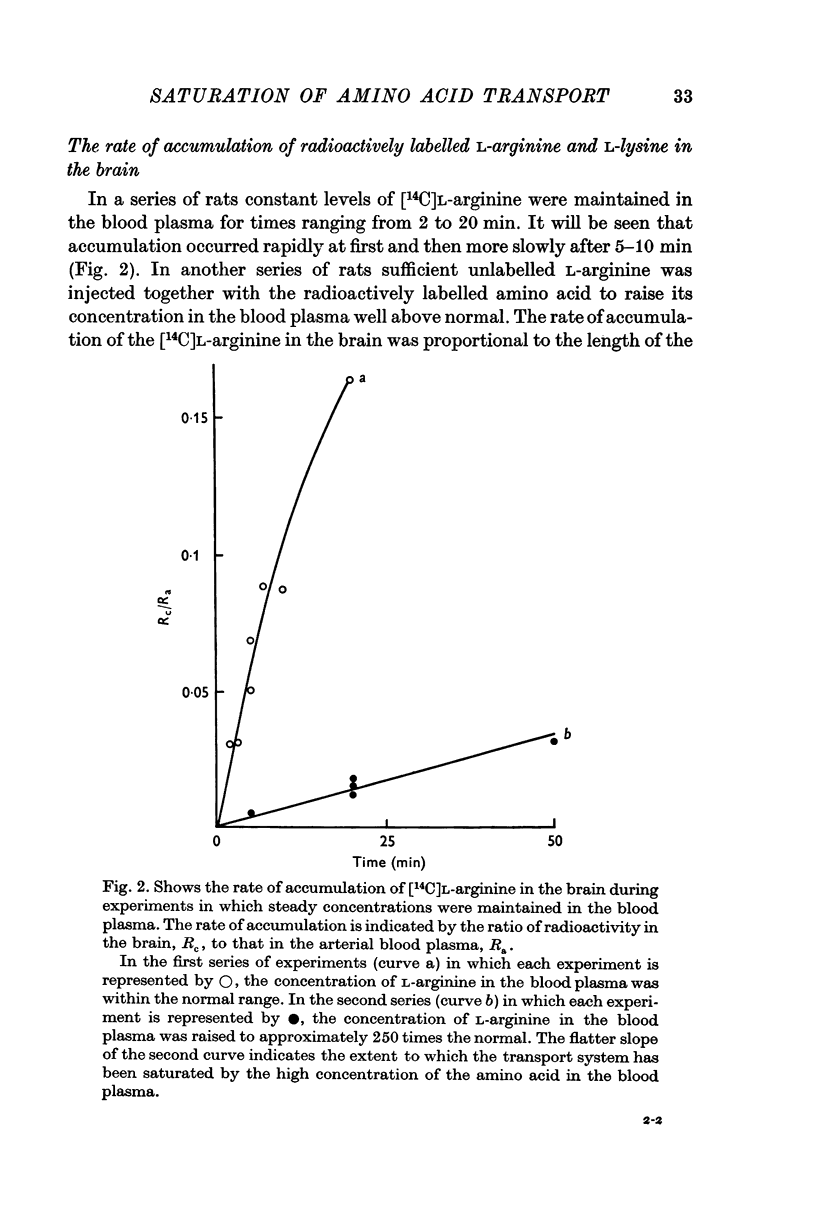
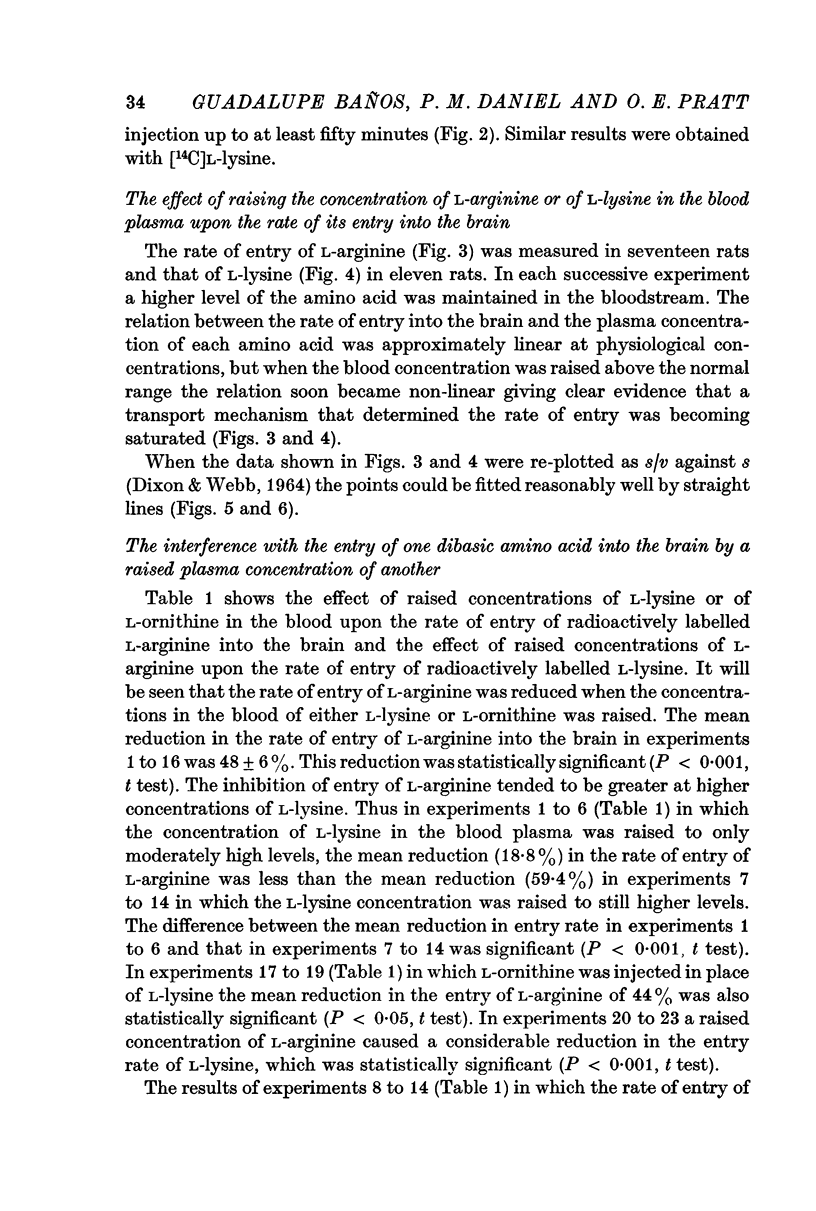
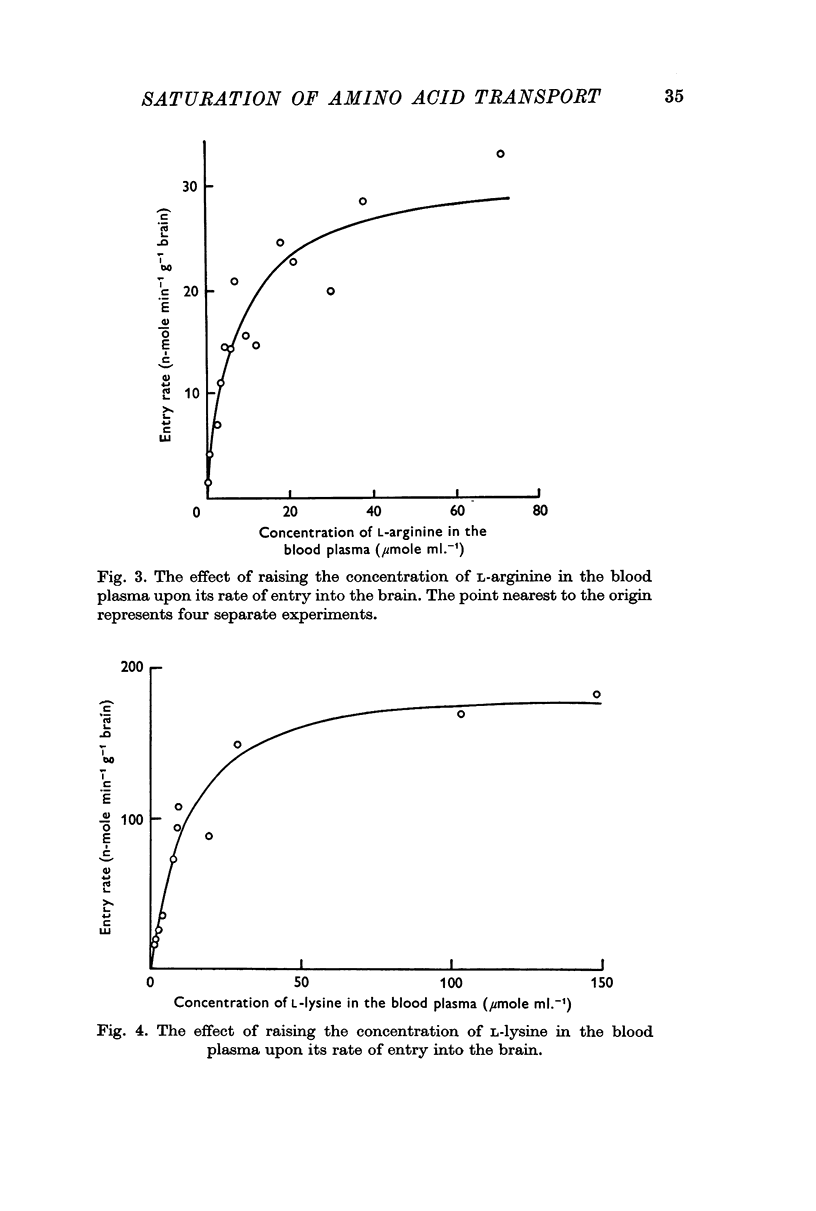
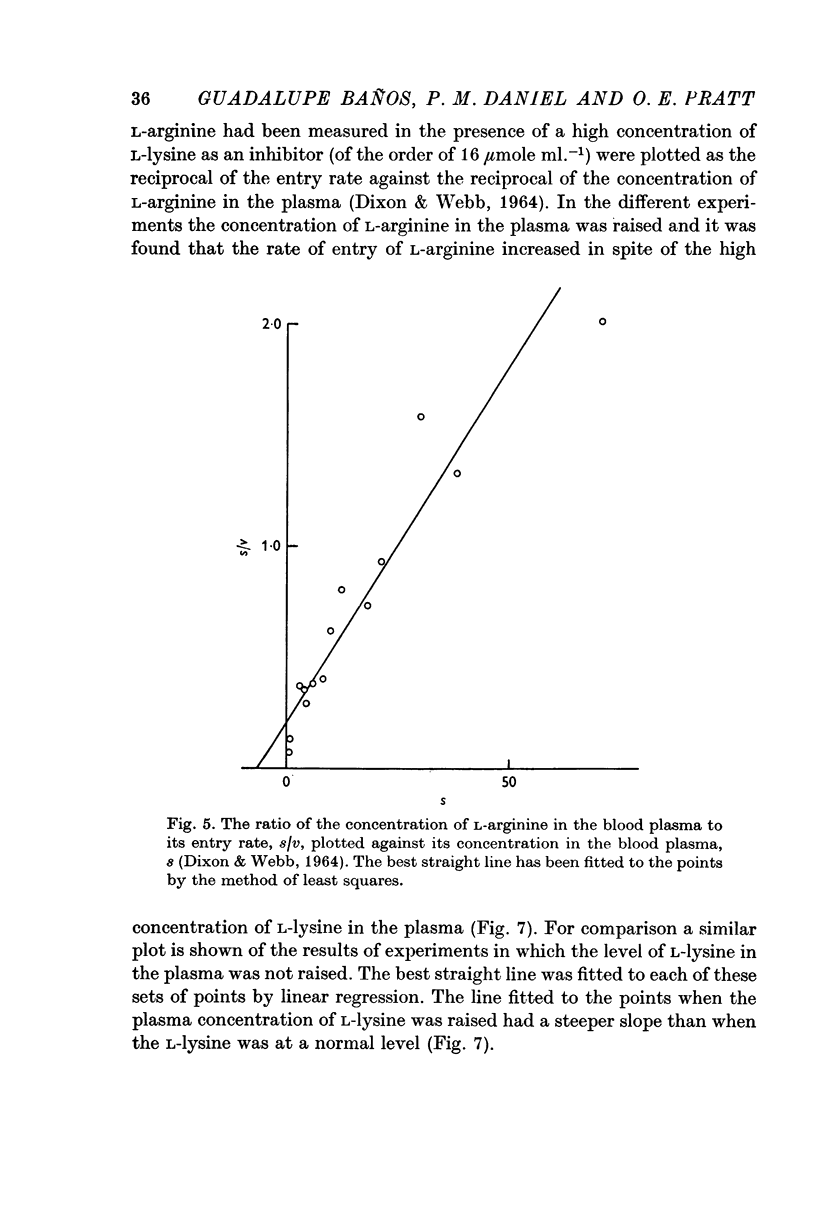
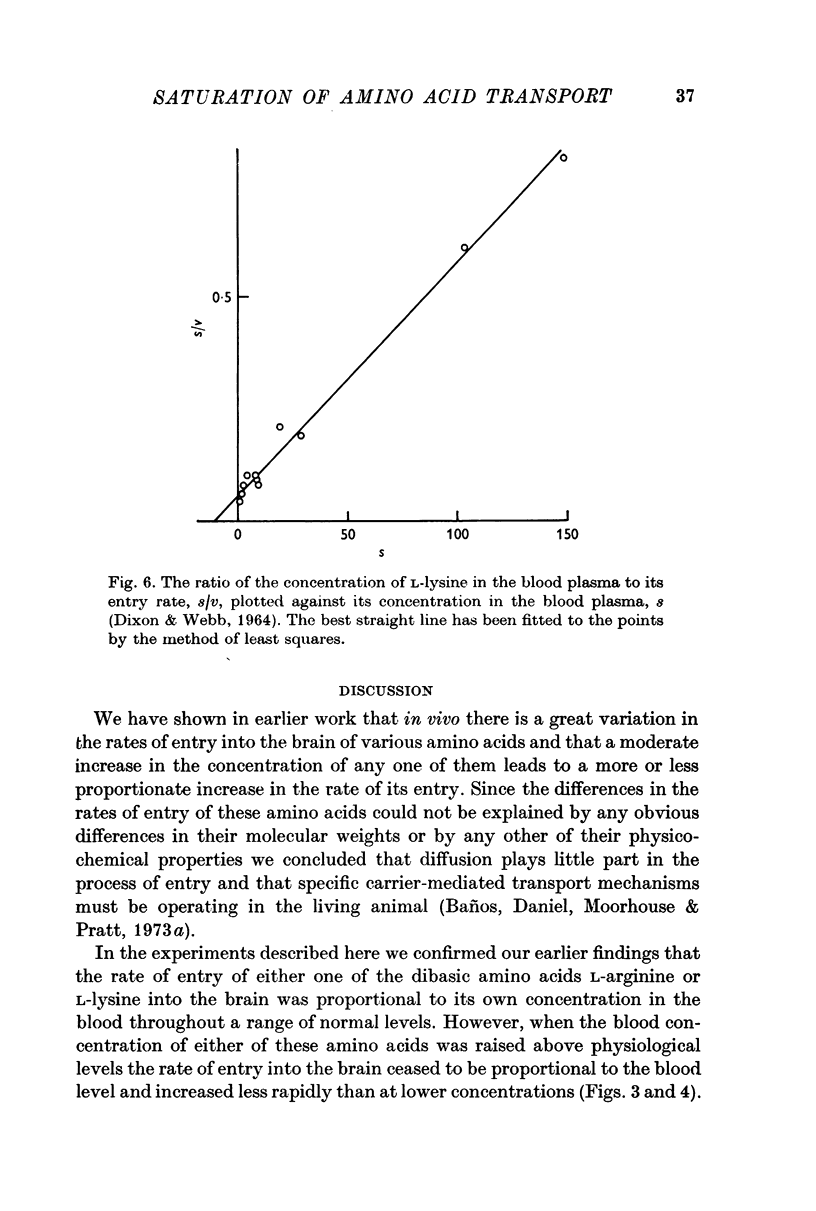
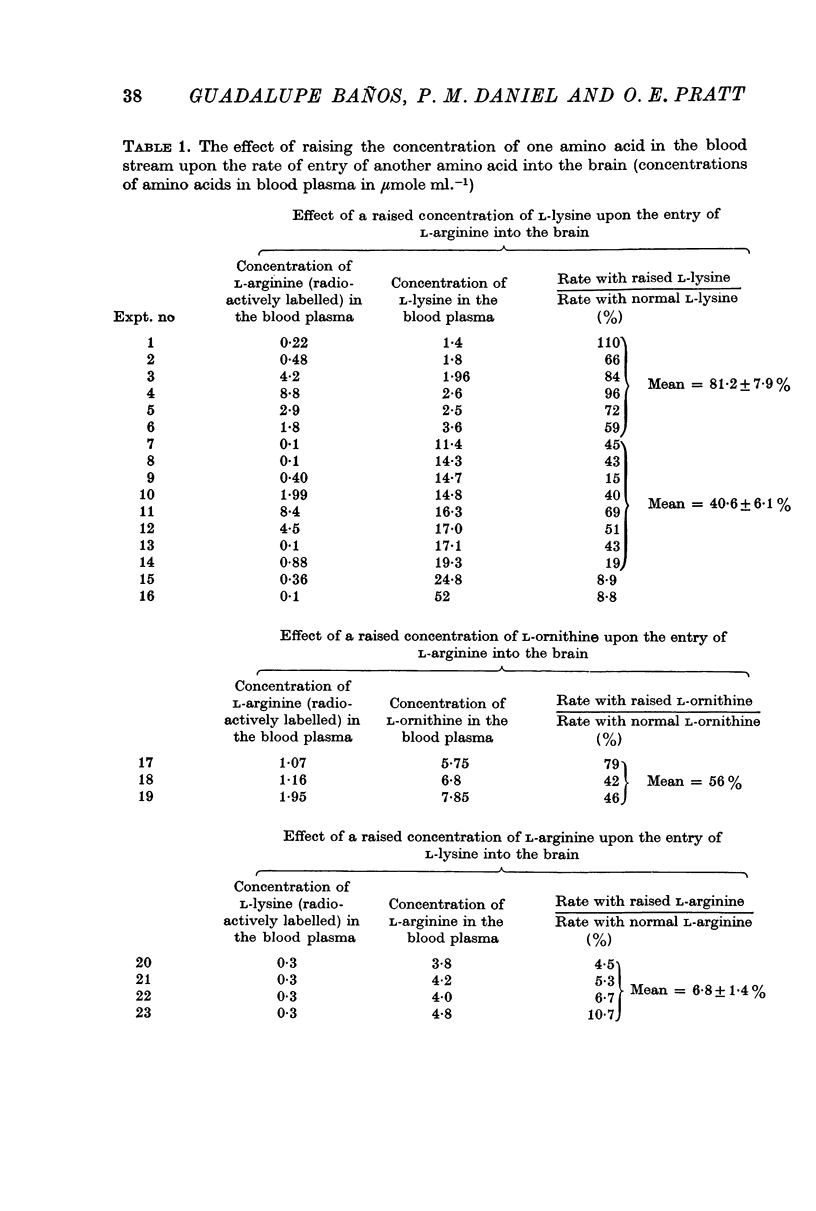
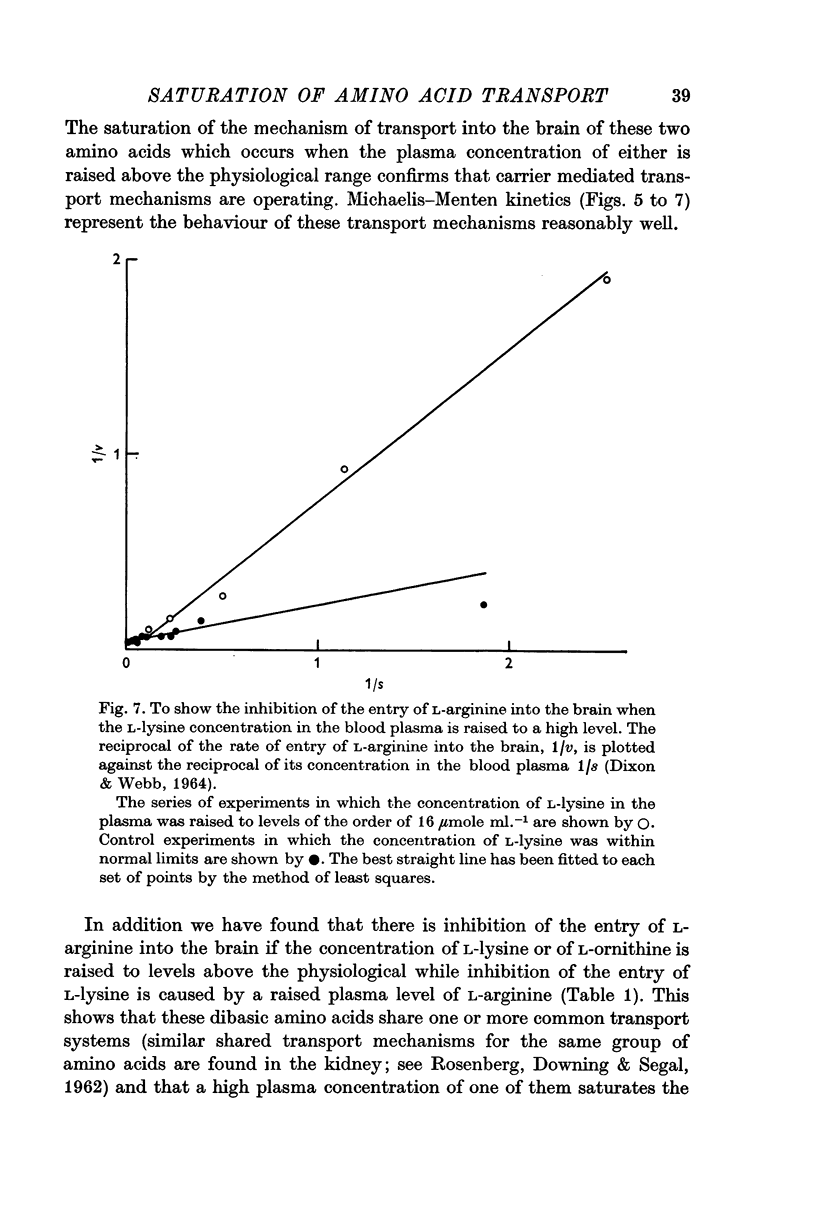

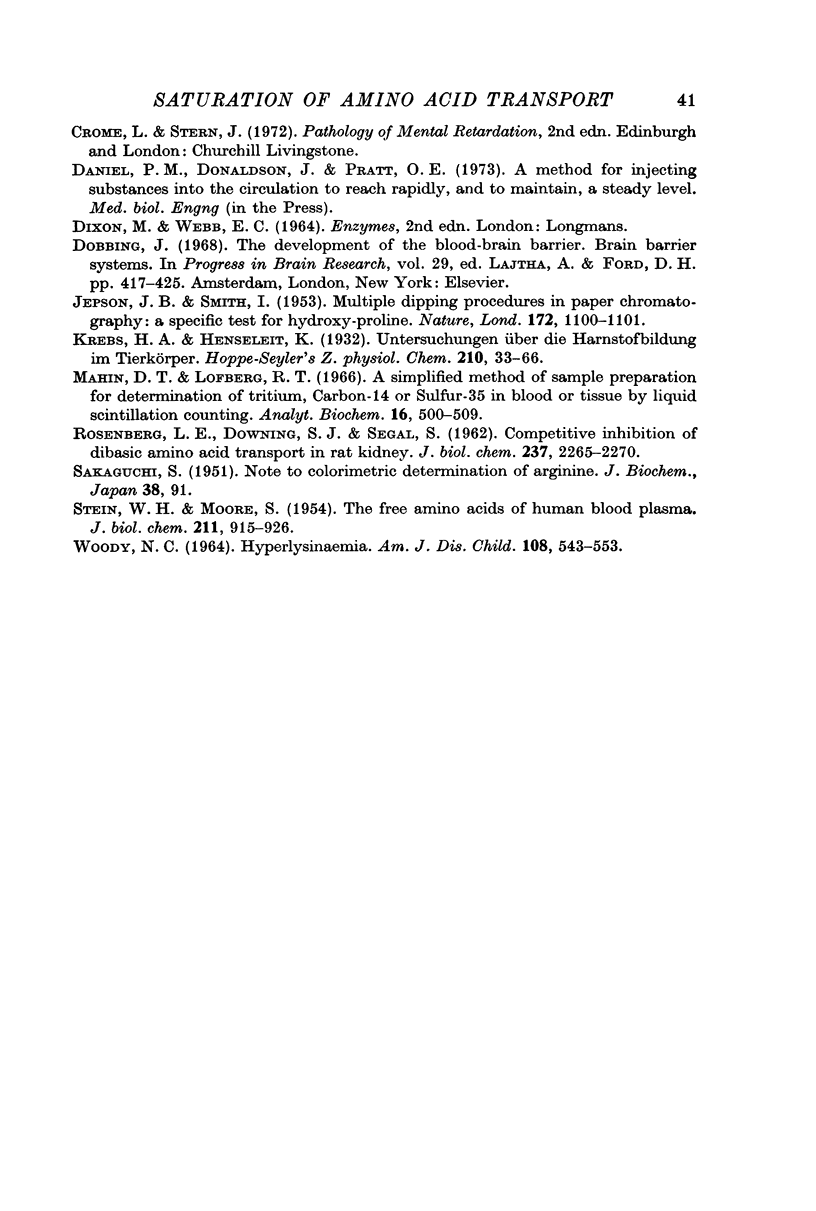
Selected References
These references are in PubMed. This may not be the complete list of references from this article.
- Atkin G. E., Ferdinand W. Accelerated amino acid analysis: studies on the use of lithium citrate buffers and the effect of n-propanol, in the analysis of physiological fluids and protein hydrolyzates. Anal Biochem. 1970 Dec;38(2):313–329. doi: 10.1016/0003-2697(70)90456-2. [DOI] [PubMed] [Google Scholar]
- Baños G., Daniel P. M., Moorhouse S. R., Pratt O. E. The influx of amino acids into the brain of the rat in vivo: the essential compared with some non-essential amino acids. Proc R Soc Lond B Biol Sci. 1973 Feb 27;183(1070):59–70. doi: 10.1098/rspb.1973.0004. [DOI] [PubMed] [Google Scholar]
- Baños G., Daniel P. M., Moorhouse S. R., Pratt O. E. The movement of amino acids between blood and skeletal muscle in the rat. J Physiol. 1973 Dec;235(2):459–475. doi: 10.1113/jphysiol.1973.sp010397. [DOI] [PMC free article] [PubMed] [Google Scholar]
- Baños G., Daniel P. M., Moorhouse S. R., Pratt O. E. The passage of amino acids into the rat's brain. J Physiol. 1970 Sep;210(2):149P–149P. [PubMed] [Google Scholar]
- JEPSON J. B., SMITH I. Multiple dipping procedures in paper chromatography: a specific test for hydroxy-proline. Nature. 1953 Dec 12;172(4389):1100–1101. doi: 10.1038/1721100b0. [DOI] [PubMed] [Google Scholar]
- ROSENBERG L. E., DOWNING S. J., SEGAL S. Competitive inhibition of dibasic amino acid transport in rat kidney. J Biol Chem. 1962 Jul;237:2265–2270. [PubMed] [Google Scholar]
- STEIN W. H., MOORE S. The free amino acids of human blood plasma. J Biol Chem. 1954 Dec;211(2):915–926. [PubMed] [Google Scholar]
- WOODY N. C. HYPERLYSINEMIA. Am J Dis Child. 1964 Nov;108:543–553. doi: 10.1001/archpedi.1964.02090010545015. [DOI] [PubMed] [Google Scholar]


